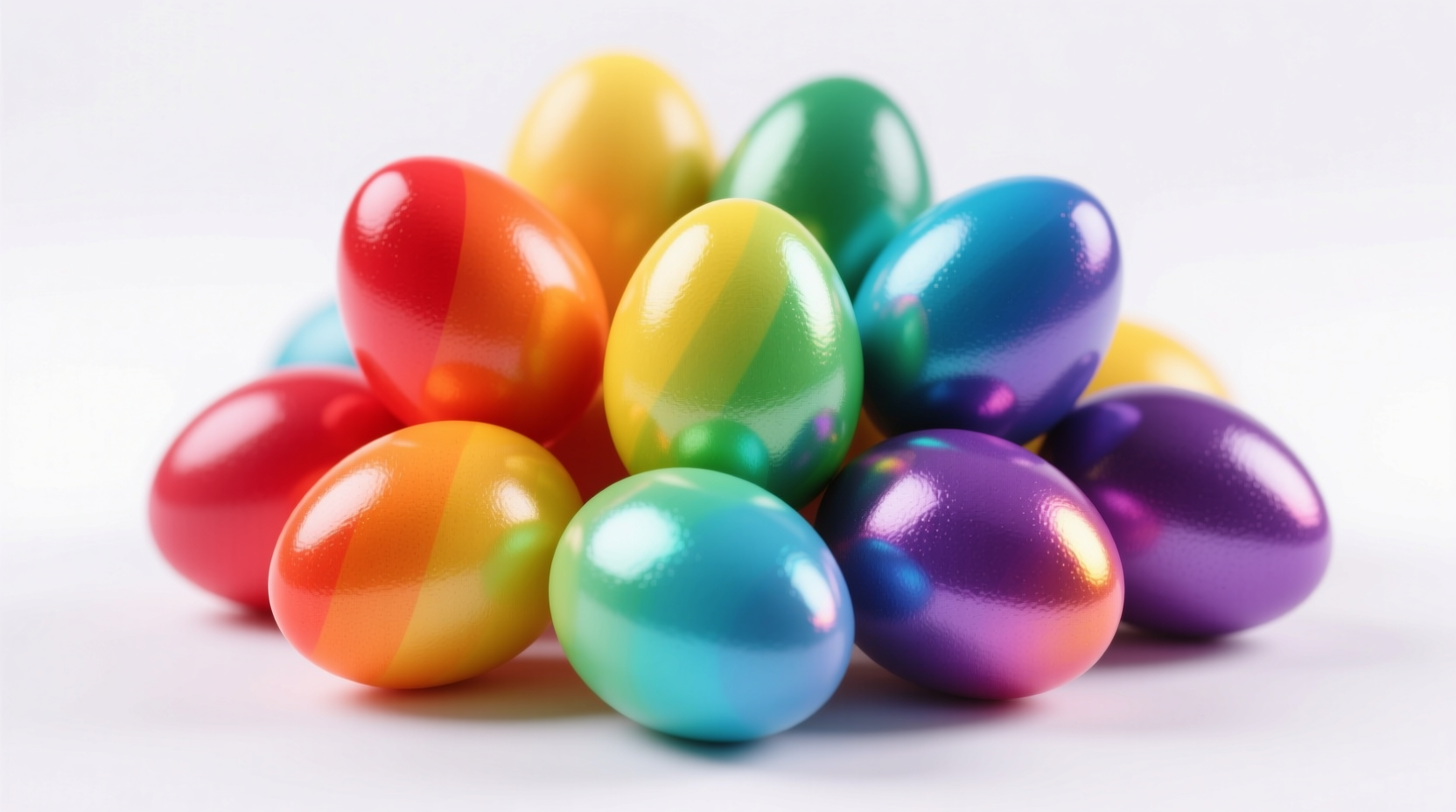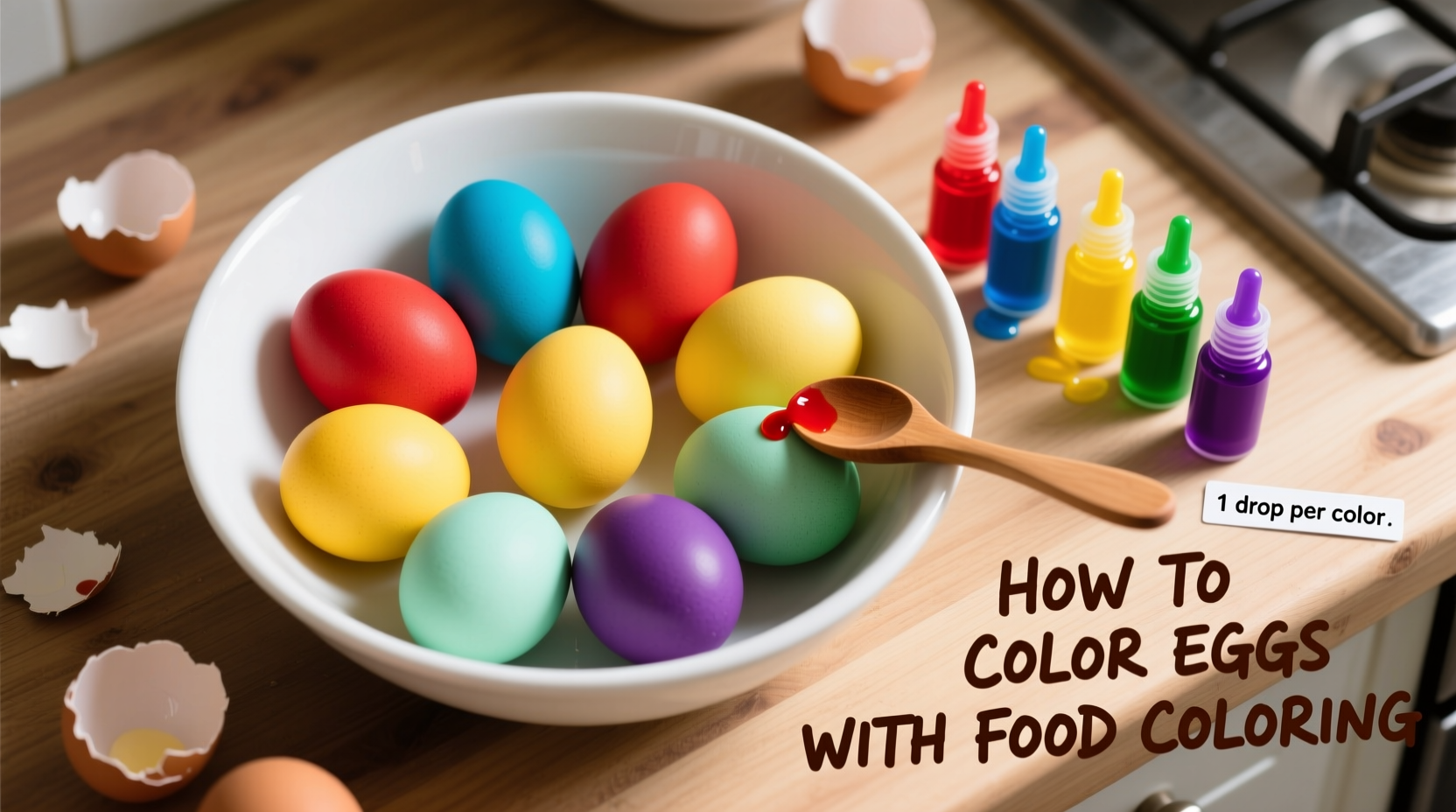Essential Supplies for Perfectly Colored Eggs
Before you begin coloring eggs with food coloring, gather these simple ingredients and tools. The right preparation ensures professional-quality results every time. You'll need:
- Hard-boiled eggs (cooled completely)
- White distilled vinegar (4 tablespoons per cup of water)
- Hot water (1 cup per color)
- Liquid food coloring (primary colors work best)
- Heatproof containers (mugs or small bowls)
- Slotted spoon or tongs
- Paper towels for drying
According to the U.S. Food and Drug Administration, always use fresh eggs stored below 40°F (4°C) and handle them properly to prevent foodborne illness when preparing hard-boiled eggs for coloring.
Step-by-Step Coloring Process
Follow these precise steps for vibrant, streak-free colored eggs. The vinegar in your dye solution helps the color adhere properly to the eggshell's calcium carbonate surface through a chemical reaction that creates stronger color bonds.
- Prepare your dye solutions: Mix 1 cup hot water, 1 teaspoon vinegar, and 20 drops of food coloring in each container
- Adjust color intensity: For deeper hues, increase food coloring to 30-40 drops per cup
- Dip eggs carefully: Submerge cooled hard-boiled eggs for 5-15 minutes depending on desired intensity
- Rotate gently: Turn eggs occasionally for even coloring without streaks
- Remove and dry: Lift eggs with slotted spoon and place on wire rack to air dry completely
| Color Intensity | Food Coloring Drops | Dipping Time | Result |
|---|---|---|---|
| Light pastel | 10-15 drops | 2-5 minutes | Soft, delicate hue |
| Medium standard | 20 drops | 5-10 minutes | Vibrant, traditional color |
| Deep jewel tone | 30-40 drops | 10-15 minutes | Rich, professional-looking finish |
Pro Techniques for Stunning Results
Professional egg decorators use these advanced methods to create impressive designs without special equipment. The key to successful food coloring egg decoration lies in understanding color theory and timing.
For two-tone effects, dip eggs halfway in your first color, let dry completely, then dip the opposite half in a contrasting color. To create marbled patterns, add a few drops of oil to your dye solution before dipping—the oil will create beautiful organic patterns as it repels the colored water.

Context and Limitations
While this food coloring method produces excellent results for most crafters, it has specific limitations worth noting. The vinegar-based solution works best on white eggs, creating more vibrant results than brown eggs which produce more muted, earthy tones.
This technique delivers optimal results when eggs are completely cooled before coloring. Attempting to color warm eggs causes the dye to absorb unevenly, creating splotchy appearance. For best preservation, store decorated eggs in the refrigerator and consume within one week.
Egg Dyeing Through History
Egg decoration dates back to ancient Persian and Egyptian traditions, but the modern food coloring method emerged in the early 20th century. According to the Library of Congress, commercial food dyes became widely available in the 1920s, transforming Easter egg coloring from a natural dye process using onion skins and beets to the vibrant, accessible craft we know today.
Traditional methods required boiling eggs with natural materials for hours to achieve subtle colors, while modern food coloring creates intense hues in minutes. This evolution made egg decorating accessible to families worldwide, becoming a beloved spring tradition across many cultures.
Troubleshooting Common Issues
Even with proper technique, you might encounter these common egg coloring challenges:
- Streaky eggs: Caused by handling eggs with fingers—use tongs for dipping
- Faded colors: Not enough food coloring or vinegar in solution
- Uneven coverage: Eggs weren't fully submerged or were too warm
- Cracked shells: Eggs boiled too vigorously before coloring
For stubborn streaks, try adding an extra teaspoon of vinegar to your dye solution. If colors appear too light, leave eggs in the solution longer rather than adding more coloring, which can create muddy hues.
Creative Variations to Try
Once you've mastered the basic food coloring egg technique, experiment with these creative approaches:
- Color blending: Dip eggs in primary colors, then overlap for secondary colors
- Wax resist: Draw designs with white crayon before dipping for patterned eggs
- Layered colors: Dip in one color, dry, then dip in another for depth
- Natural alternatives: Try beet juice (pink), turmeric (yellow), or red cabbage (blue)
Remember that natural dyes require longer soaking times and produce more subtle results than food coloring. For the most vibrant Easter egg coloring experience, liquid food coloring remains the most reliable option for consistent, brilliant results.











 浙公网安备
33010002000092号
浙公网安备
33010002000092号 浙B2-20120091-4
浙B2-20120091-4